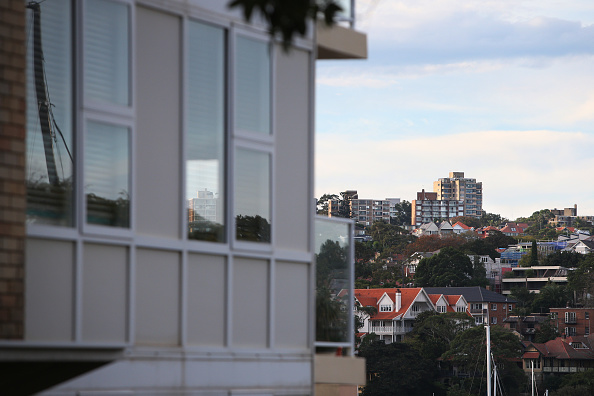Parents Who Share Info About Their Kids Online Are a Cybersecurity Risk. Here’s Why.
It’s adorable to hear about the newborn, the birthdays, the accomplishments. But it is just giving more information to future identity thieves.
There are few things more heartwarming than seeing parents posting about their children on social media. Their names, their pictures, their birthdays, their accomplishments, their teachers, their pets. What parents wouldn’t want the world to know how wonderful their child is?
In recent years, however, such “sharenting” has gotten some pushback for violating children’s privacy, and depriving them of choices about their online identities. How, some people are asking, will my 21-year-old daughter feel one day about what I’m sharing now?
But what has gotten little attention is how sharenting also should raise concerns about their children’s future online security.
Starts before birth
It all, of course, seems so innocuous and precious, and starts even before birth. Parents post images of their scans, with due dates included, to social-media sites. Both parents are usually tagged. The follow-up is a birth announcement, which normally includes the child’s full name, date of birth, time of birth, weight and hospital. Milestones are next: the child’s first steps, first holiday, first pet, first word, best friend, favourite food.
If these milestones sound familiar, it is because they are routinely used as answers to the security “challenge” questions that we use to get into online accounts when we forget our passwords. One survey on password choice found that 42% of British people use either a pet’s name, a family member’s name or a significant date as their password. You want to hack into somebody’s account 10 years from now? Just look back online and see the name of a first pet or a first-grade teacher. It’s all probably going to be there for the taking.
Barclays Bank warned that by 2030, after another decade of parents gleefully and unknowingly sharenting at current rates, 7.4 million identity-theft cases could occur a year. The Identity Theft Resource Center warns that by combining information from social media, such as name, date of birth and address, along with the troves of hacked personal data available to buy cheaply on the dark web, such as Social Security numbers, a scammer has all the details needed to open up a bank account or take out a loan in a child’s name.
The pandemic has compounded this issue.One study found that many schools encouraged parents to post videos to social media to keep children connected, increasing the volume of personal information about children’s home lives being shared online.
Thousands of photos
By their fifth birthday, the average child will have around 1,500 photos of themselves shared online. This means that by the age of 13, when children are allowed to use social-media sites themselves, there could already be almost 4,000 photos depicting them online. Those figures don’t include children of parent influencers, who build careers around posting information about their children to a worldwide fan base completely unknown to them, with unknown trustworthiness.
An emerging threat to children is the use of AI technology used to create deep fakes: images, videos, GIFs, sounds or voices manipulated to look or sound like someone else. Given the vast volume of children’s images and videos posted online by their parents, malicious creation of deep fakes could be used by cyberbullies or school bullies.
When posting information online, parents don’t normally ask their children for their consent. Yet consider this: The U.K. Safer Internet Centre’s survey on young people’s experiences online found that 46% of them felt anxious and out of control of their information when they discovered posts about themselves online that they hadn’t been aware of. A further 44% felt angry, with only 15% seemingly being indifferent.
Coming explosion
It’s clear that this information is a ticking time bomb, and likely to result in an explosion of embarrassment and angst for our children as they grow up, as well as exposing them to identity theft.
What can we do about it? For one thing, parents should be aware that their shout-outs about their children—however well-meaning—could cause real long-term damage to the people they most love.
In addition, our social-media privacy settings can help control the audience that sees our posts. Ensuring we are comfortable with which social-media platforms we use, how our profiles are set up, how public our posts are, and what information we are giving away can help us make informed choices on how our children’s digital footprints are shaping up.
Understanding the real-world consequences of sharenting allows us all to make better-informed choices on our decision to post or not to post. We all want to give our children the best lives they can possibly live. Let’s not undermine it by constantly telling the world how wonderful they are.
 Copyright 2020, Dow Jones & Company, Inc. All Rights Reserved Worldwide. LEARN MORE
Copyright 2020, Dow Jones & Company, Inc. All Rights Reserved Worldwide. LEARN MORE
This stylish family home combines a classic palette and finishes with a flexible floorplan
Just 55 minutes from Sydney, make this your creative getaway located in the majestic Hawkesbury region.
As Paris makes its final preparations for the Olympic games, its residents are busy with their own—packing their suitcases, confirming their reservations, and getting out of town.
Worried about the hordes of crowds and overall chaos the Olympics could bring, Parisians are fleeing the city in droves and inundating resort cities around the country. Hotels and holiday rentals in some of France’s most popular vacation destinations—from the French Riviera in the south to the beaches of Normandy in the north—say they are expecting massive crowds this year in advance of the Olympics. The games will run from July 26-Aug. 1.
“It’s already a major holiday season for us, and beyond that, we have the Olympics,” says Stéphane Personeni, general manager of the Lily of the Valley hotel in Saint Tropez. “People began booking early this year.”
Personeni’s hotel typically has no issues filling its rooms each summer—by May of each year, the luxury hotel typically finds itself completely booked out for the months of July and August. But this year, the 53-room hotel began filling up for summer reservations in February.
“We told our regular guests that everything—hotels, apartments, villas—are going to be hard to find this summer,” Personeni says. His neighbours around Saint Tropez say they’re similarly booked up.
As of March, the online marketplace Gens de Confiance (“Trusted People”), saw a 50% increase in reservations from Parisians seeking vacation rentals outside the capital during the Olympics.
Already, August is a popular vacation time for the French. With a minimum of five weeks of vacation mandated by law, many decide to take the entire month off, renting out villas in beachside destinations for longer periods.
But beyond the typical August travel, the Olympics are having a real impact, says Bertille Marchal, a spokesperson for Gens de Confiance.
“We’ve seen nearly three times more reservations for the dates of the Olympics than the following two weeks,” Marchal says. “The increase is definitely linked to the Olympic Games.”

Getty Images
According to the site, the most sought-out vacation destinations are Morbihan and Loire-Atlantique, a seaside region in the northwest; le Var, a coastal area within the southeast of France along the Côte d’Azur; and the island of Corsica in the Mediterranean.
Meanwhile, the Olympics haven’t necessarily been a boon to foreign tourism in the country. Many tourists who might have otherwise come to France are avoiding it this year in favour of other European capitals. In Paris, demand for stays at high-end hotels has collapsed, with bookings down 50% in July compared to last year, according to UMIH Prestige, which represents hotels charging at least €800 ($865) a night for rooms.
Earlier this year, high-end restaurants and concierges said the Olympics might even be an opportunity to score a hard-get-seat at the city’s fine dining.
In the Occitanie region in southwest France, the overall number of reservations this summer hasn’t changed much from last year, says Vincent Gare, president of the regional tourism committee there.
“But looking further at the numbers, we do see an increase in the clientele coming from the Paris region,” Gare told Le Figaro, noting that the increase in reservations has fallen directly on the dates of the Olympic games.
Michel Barré, a retiree living in Paris’s Le Marais neighbourhood, is one of those opting for the beach rather than the opening ceremony. In January, he booked a stay in Normandy for two weeks.
“Even though it’s a major European capital, Paris is still a small city—it’s a massive effort to host all of these events,” Barré says. “The Olympics are going to be a mess.”
More than anything, he just wants some calm after an event-filled summer in Paris, which just before the Olympics experienced the drama of a snap election called by Macron.
“It’s been a hectic summer here,” he says.

AFP via Getty Images
Parisians—Barré included—feel that the city, by over-catering to its tourists, is driving out many residents.
Parts of the Seine—usually one of the most popular summertime hangout spots —have been closed off for weeks as the city installs bleachers and Olympics signage. In certain neighbourhoods, residents will need to scan a QR code with police to access their own apartments. And from the Olympics to Sept. 8, Paris is nearly doubling the price of transit tickets from €2.15 to €4 per ride.
The city’s clear willingness to capitalise on its tourists has motivated some residents to do the same. In March, the number of active Airbnb listings in Paris reached an all-time high as hosts rushed to list their apartments. Listings grew 40% from the same time last year, according to the company.
With their regular clients taking off, Parisian restaurants and merchants are complaining that business is down.
“Are there any Parisians left in Paris?” Alaine Fontaine, president of the restaurant industry association, told the radio station Franceinfo on Sunday. “For the last three weeks, there haven’t been any here.”
Still, for all the talk of those leaving, there are plenty who have decided to stick around.
Jay Swanson, an American expat and YouTuber, can’t imagine leaving during the Olympics—he secured his tickets to see ping pong and volleyball last year. He’s also less concerned about the crowds and road closures than others, having just put together a series of videos explaining how to navigate Paris during the games.
“It’s been 100 years since the Games came to Paris; when else will we get a chance to host the world like this?” Swanson says. “So many Parisians are leaving and tourism is down, so not only will it be quiet but the only people left will be here for a party.”
This stylish family home combines a classic palette and finishes with a flexible floorplan
Just 55 minutes from Sydney, make this your creative getaway located in the majestic Hawkesbury region.






















